I wanted to write a quick little post on why I love my bicycle. There are, of course, very good urbanist and environmentalist reasons to love bikes-- they're clean, they're green, they take up very little space-- but this post isn't about those. I want to talk about the empowerment I feel when I get on a bike and go somewhere.
My bicycle is a machine to greatly expand my personal transportation ability. By using a bicycle, I can get to anywhere I need using only the strength in my legs. I need not rely upon any expensive infrastructure of fueling stations, auto parts stores and mechanics. It doesn't matter if I have any money in my bank account. So long as I can push the pedals, I can go places.
My bicycle is a transportation tool, but not a complex and expensive one like an automobile. There is nothing on my bike that I can't fix myself, using simple hand tools and a few choice expletives. When I hauled my old bicycle out of the campus impound, it was in awful shape- but $50 and a few hours of labor made it a reliable, if not well-tuned, ride. There is little on a bicycle whose function I can't figure out within a few minutes of looking and tinkering. Compare the simple elegance of the chain drive with the innumerable, oddly-shaped boxes under the hood of a car, with their tangle of wires and hoses emerging from every corner.
My bicycle cares not about schedules, fare tables, or bus and train breakdowns. It doesn't worry about arcane transfer policies, or whether I have my UCR ID for the farebox or the college discount. (Sometimes, I wish it did.) When I do feel like dealing with those things, my bicycle is happy to come along for the ride, and continue empowering my transportation choices once I get where I'm going.
With my bicycle, I can go anywhere within 50 miles, with nothing more than myself and a simple machine that I can fix with hand tools. It puts my transportation back in my hands- or, really, my legs.
My colleague refers to his bicycle as a "two-wheel freedom machine." I think that's about right.
Wednesday, November 30, 2011
Wednesday, November 23, 2011
Free Ride Friday
Just to let you all know, Omnitrans is offering free rides for all on Black Friday, this Friday, from beginning to end of service. No coupons to print, just walk on the bus.
Of course, all transit in the IE will be shut down tomorrow, Thursday the 24th, with the exception of Sunday service on the San Bernardino line (which means a few trips to Riverside-Downtown!). Both RTA and Omni will return to normal service on Friday.
If you must go out, walk, bike, ZipCar, or call a cab. Your local taxicab providers are:
Yellow Cab (800) 829-4222
AA Inland Empire Cab (888) 333-8294
Happy Taxi (951) 781-8294
Of course, all transit in the IE will be shut down tomorrow, Thursday the 24th, with the exception of Sunday service on the San Bernardino line (which means a few trips to Riverside-Downtown!). Both RTA and Omni will return to normal service on Friday.
If you must go out, walk, bike, ZipCar, or call a cab. Your local taxicab providers are:
Yellow Cab (800) 829-4222
AA Inland Empire Cab (888) 333-8294
Happy Taxi (951) 781-8294
Tuesday, November 22, 2011
Road Safety in the U.S.
Most of us remember the numbers... TWA 800, JAL 123, United 93... major air disasters, resulting in mass casualties. However, as a favorite blogger of mine (usually on economics and politics) writes today, our road system takes many, many more lives. Roughly the equivalent of two fully-loaded 747's die every week on the roads in the U.S. The only difference is that they don't all happen at once, in a single, spectacular fireball, so the only place you're likely to hear about them on the news is in the traffic report.
This is probably the biggest immediate reason to end our auto-addicted transportation system.
This is probably the biggest immediate reason to end our auto-addicted transportation system.
Thursday, November 17, 2011
The Transportation Toolbox
I alluded to this post in my earlier Declaration of Independence- from the car, that is. I want to talk about the versatility of the automobile, and the choices people make about transportation often without thinking about them. I want to do this by looking at what a typical auto addict's transportation toolbox, and how it compares to a more balanced one. (Spoiler alert: I'm going to use mine for the "more balanced" column.)
Auto Addict's Transportation Toolbox:
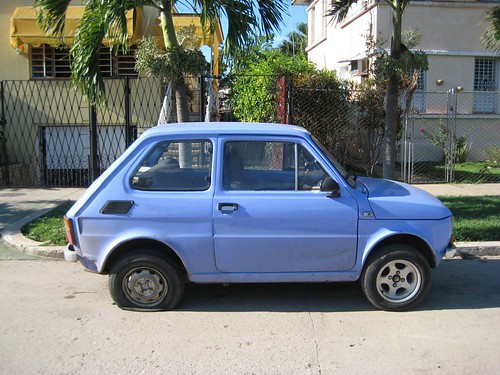
Automobile.
Used for: The vast majority of trips, from the corner store to the daily commute to the occasional cross-country road trip.

Aircraft.
Used for: Moving people for most long-distance trips, generally around a thousand km and up.
Not a lot of diversity here. Now, granted, a lot of people will engage in a walk from time to time, and there are quite a few recreational hikers and cyclists out there... but, for pure transportation, this is roughly what many Americans' lives look like, especially in suburbia- and especially for what used to be called "the middle class." The design of many tract developments especially almost necessitates a toolkit that looks like this, as it often walls people off from walking, cycling and taking transit. Furthermore, for long-distance transportation, many are entirely unaware of our national rail system and (despite encouraging changes in the northeast and in Chicagoland) disinclined to use long-distance bus service.
Let's now take a look at what my transportation toolkit looks like. Now, I'm not saying I'm perfect, but it should be clear that an awareness of one's transportation options allows a better matching between the job at hand and the tool used to do it.
Car-free Transportation Toolbox:
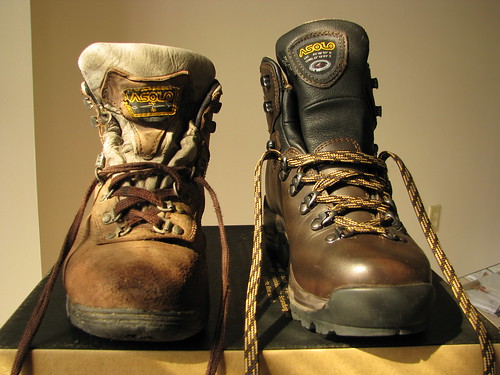
Walking.
Used for: A small number of very short trips, often with company. Honestly, I don't walk too much, but I do on occasion. As I've mentioned, we have a fairly nice shopping centre within five minutes' walk of our apartment, and so sometimes the wife and I will walk there for shopping or a nice dinner.
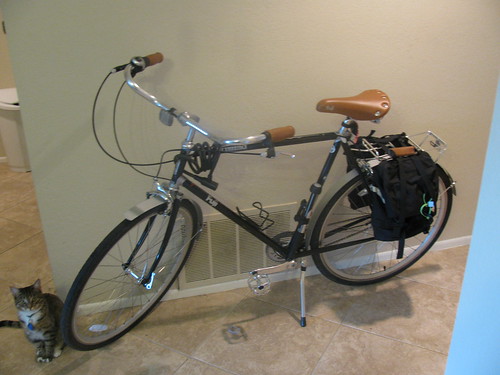
Bicycling.
Used for: Most trips within a 10 mile radius that I take alone, including moderate cargo hauling. My bike is my go-to transportation tool, and serves the majority of trips I take. You'd also be amazed at the amount of cargo I can haul on the back, with nothing more than panniers and a rear rack. (I'm drooling over the amazingly versatile Burley Travoy trailer, but haven't plunked down the money yet.) Sadly, my wife is difficult to coax on to the back of a bicycle, so it's rare that we pedal places together.
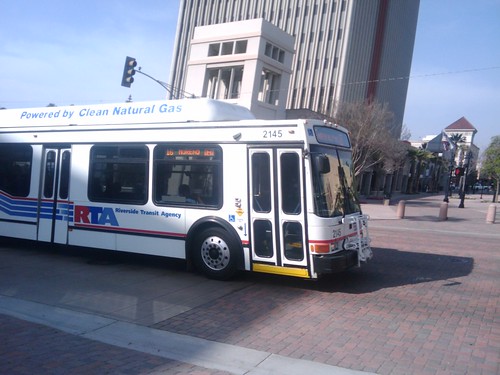
Local Bus.
Used for: A lot of around-town trips, especially during inclement weather, as well as some longer-distance trips that would be difficult to manage on a bicycle. I also used the RTA to haul food for 80 Occupiers downtown earlier, so it's occasionally useful for certain specialized types of cargo. I can also, occasionally, manage to get Dani on to a bus, so we've been known to go out together via transit.
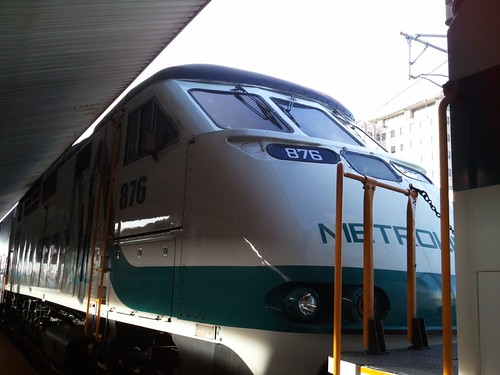
Commuter Rail.
Used for: Pretty much every trip I make to LA or Orange County (though I sometimes use the bus to the OC). Also occasionally the first step in longer-distance rail trips, leaving from LA Union.
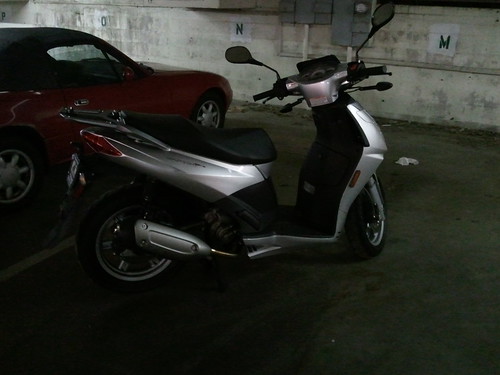
Scooter.
Used for: Most trips my wife makes, along with a lot of trips that the two of us makes. It will haul the both of us, and not a whole lot more, so it's not generally used for more than light shopping.

Zipcar.
Used for: Shopping trips, mostly. It's also a great backup when one of us has the scooter and the other one *has* to get somewhere quickly, or when we were dealing with car breakdowns.

Long-distance Rail.
Used for: Any long-distance trip that it makes sense for, including my 30-day 25-state 4-province Amtrak trip. Travel by train is my favourite way to travel- especially if I can afford sleeper.
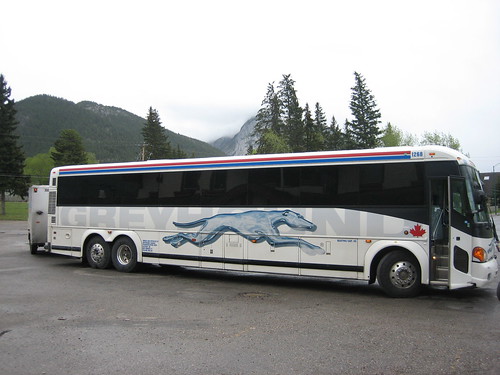
Long-distance bus.
Used for: Trips where the train can't hack it. Sometimes, I use Greyhound as a supplement to Metrolink and other intra-regional services. Other times, it's used for long highway trips. One must be careful when trying to take the Hound to Vegas.

Aircraft.
Used for: Long-distance domestic trips where time is a factor, as well as international trips (which I haven't taken enough of...).
Once you get away from the car-centric paradigm of transportation, a whole range of transport options opens up to you- and it's important, for all of the reasons that readers of this blog already know, that we restore balance to our transportation system.
NOTE: The photos of the car, ZipCar, airplane, Greyhound bus, and hiking boots are not mine. They are used under Creative Commons licensing, and the photographers are credited in the alt text.
Auto Addict's Transportation Toolbox:

Automobile.
Used for: The vast majority of trips, from the corner store to the daily commute to the occasional cross-country road trip.

Aircraft.
Used for: Moving people for most long-distance trips, generally around a thousand km and up.
Not a lot of diversity here. Now, granted, a lot of people will engage in a walk from time to time, and there are quite a few recreational hikers and cyclists out there... but, for pure transportation, this is roughly what many Americans' lives look like, especially in suburbia- and especially for what used to be called "the middle class." The design of many tract developments especially almost necessitates a toolkit that looks like this, as it often walls people off from walking, cycling and taking transit. Furthermore, for long-distance transportation, many are entirely unaware of our national rail system and (despite encouraging changes in the northeast and in Chicagoland) disinclined to use long-distance bus service.
Let's now take a look at what my transportation toolkit looks like. Now, I'm not saying I'm perfect, but it should be clear that an awareness of one's transportation options allows a better matching between the job at hand and the tool used to do it.
Car-free Transportation Toolbox:

Walking.
Used for: A small number of very short trips, often with company. Honestly, I don't walk too much, but I do on occasion. As I've mentioned, we have a fairly nice shopping centre within five minutes' walk of our apartment, and so sometimes the wife and I will walk there for shopping or a nice dinner.

Bicycling.
Used for: Most trips within a 10 mile radius that I take alone, including moderate cargo hauling. My bike is my go-to transportation tool, and serves the majority of trips I take. You'd also be amazed at the amount of cargo I can haul on the back, with nothing more than panniers and a rear rack. (I'm drooling over the amazingly versatile Burley Travoy trailer, but haven't plunked down the money yet.) Sadly, my wife is difficult to coax on to the back of a bicycle, so it's rare that we pedal places together.

Local Bus.
Used for: A lot of around-town trips, especially during inclement weather, as well as some longer-distance trips that would be difficult to manage on a bicycle. I also used the RTA to haul food for 80 Occupiers downtown earlier, so it's occasionally useful for certain specialized types of cargo. I can also, occasionally, manage to get Dani on to a bus, so we've been known to go out together via transit.

Commuter Rail.
Used for: Pretty much every trip I make to LA or Orange County (though I sometimes use the bus to the OC). Also occasionally the first step in longer-distance rail trips, leaving from LA Union.

Scooter.
Used for: Most trips my wife makes, along with a lot of trips that the two of us makes. It will haul the both of us, and not a whole lot more, so it's not generally used for more than light shopping.

Zipcar.
Used for: Shopping trips, mostly. It's also a great backup when one of us has the scooter and the other one *has* to get somewhere quickly, or when we were dealing with car breakdowns.

Long-distance Rail.
Used for: Any long-distance trip that it makes sense for, including my 30-day 25-state 4-province Amtrak trip. Travel by train is my favourite way to travel- especially if I can afford sleeper.

Long-distance bus.
Used for: Trips where the train can't hack it. Sometimes, I use Greyhound as a supplement to Metrolink and other intra-regional services. Other times, it's used for long highway trips. One must be careful when trying to take the Hound to Vegas.

Aircraft.
Used for: Long-distance domestic trips where time is a factor, as well as international trips (which I haven't taken enough of...).
Once you get away from the car-centric paradigm of transportation, a whole range of transport options opens up to you- and it's important, for all of the reasons that readers of this blog already know, that we restore balance to our transportation system.
NOTE: The photos of the car, ZipCar, airplane, Greyhound bus, and hiking boots are not mine. They are used under Creative Commons licensing, and the photographers are credited in the alt text.
Wednesday, November 9, 2011
How do we think about multi-modal transportation?
The Atlantic has a great piece on Missouri's first-in-the-nation "diverging diamond" interchange, where a livable streets advocate (Charles Marohn) contrasts his interpretation of a walk through the interchange with that of the engineer promoting it. In a larger sense, though, Marohn asks us to think about how we integrate non-auto modes into our transportation system.
Marohn alleges in the video (around 7:00 or so) that the way that traffic engineers think about non-auto mobility is flawed. He says that the design is, first and foremost, designed to meet "the standard engineering parameter of being able to move cars very quickly through here," and only after meeting that criteria are any alternative modes considered. He concedes that the design accommodates pedestrians and cyclists better than some intersections, but that it still demonstrates an overwhelming preference for automobiles over other modes.
If we are really serious about shifting away from the dominance of the car, we need to think about designing transportation systems to accommodate all modes equally, rather than designing for cars first and leaving everyone else as an afterthought.
Marohn alleges in the video (around 7:00 or so) that the way that traffic engineers think about non-auto mobility is flawed. He says that the design is, first and foremost, designed to meet "the standard engineering parameter of being able to move cars very quickly through here," and only after meeting that criteria are any alternative modes considered. He concedes that the design accommodates pedestrians and cyclists better than some intersections, but that it still demonstrates an overwhelming preference for automobiles over other modes.
If we are really serious about shifting away from the dominance of the car, we need to think about designing transportation systems to accommodate all modes equally, rather than designing for cars first and leaving everyone else as an afterthought.
Thursday, November 3, 2011
Simple Truths
I'm in a ranty mood today, so here goes. What follows is a short list of simple truths about alternative transportation that are nevertheless ignored by many denizens of Riverside:
- The bus is not smelly or dirty, generally speaking, nor is it full to the brim with borderline psychotics.
- Bicycle lanes are intended for the use of bicycles. Not joggers, strollers, skateboards, or kick scooters, but bicycles.
- Sidewalks are intended for the use of pedestrians, skateboards, kick scooters, etc., but not bicycles.
- The back of the bus is going to the same place as the rest of the bus- which means it's a-okay to stand back there, rather than smoosh together so tightly that nobody can board.
- Board at the front door, exit at the rear.
- SUV-sized strollers don't fit well on buses, especially at rush hour.
- Metro does not serve Riverside.
- Bicycle lanes, just like nearly every other kind of lane, travel in one direction only. In fact, they're even painted with helpful little arrows to remind you of which direction that is.
Subscribe to:
Posts (Atom)


